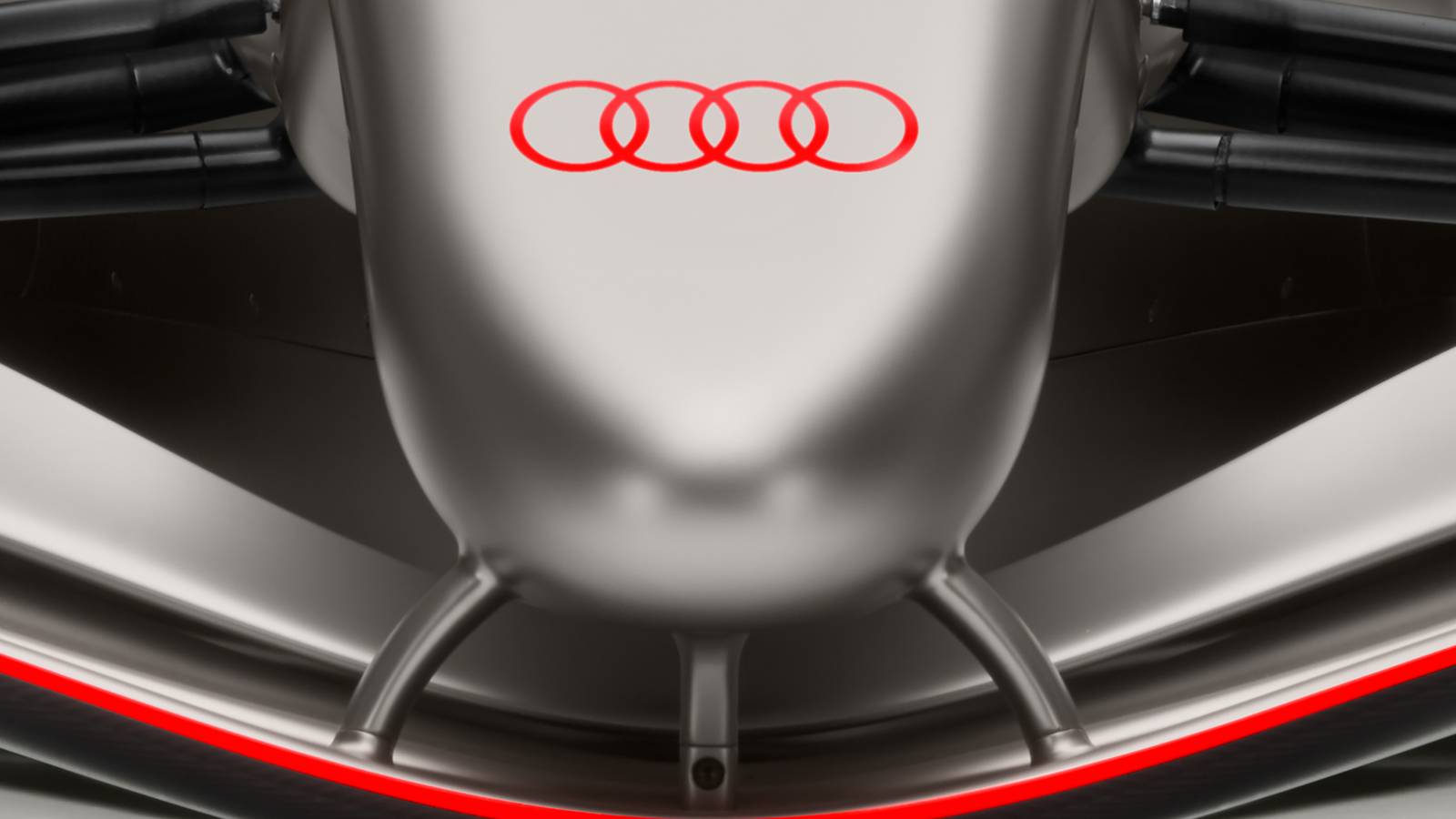The car you see here is not the Audi F1 car that will line up on the grid for the first race of the season in Australia next year. Advanced active aerodynamics will play a key role in the new 2026 regulations, and all 11 teams will keep their cards as close to their chests as possible until the first laps are run during pre-season testing; it’s also missing the corporate sponsors. But that does not mean the Audi R26 Concept is not important, as it reveals for the first time why the German brand spent so much money on what it calls the “Audi F1 Project.”
Audi’s press release states that R26 is one of the “first expressions of the brand’s new visual identity,” and gives us a prime example of how this piece of unobtanium will filter down to road-legal cars. You’ve seen that silver (called Titanium) recently on the new Concept C sports car. The red color on the livery is all new, and it’s called Audi red (the designer also referred to it as Lava red). While you can’t give them points for whimsical naming, the color will feature on the springs of select cars to make them stand out from lesser Audis. How much do you want to bet the upcoming Audi RS6 will have red springs? It’s not exactly groundbreaking marketing, but racing on Sunday and selling on Monday has been proven to be a smash hit with customers, and F1 has never been as big as it is right now.
From next year, the USA will be the only country to host more than one race. The total viewership for 2024 was 1.6 billion, and 2025 is right on track to break that record again. The race won by Max Verstappen at COTA broke American viewer figures. But these figures are not as important as the people they represent. One in three is younger than 35, and more than 120 million women have become fans in the past five years. Those are two key demographics if you want to sell cars, but that’s not all this is about.
Thanks to quattro, Audi is best known for dominating the World Rally Championship during the 1980s. Those four world championships also proved that technology from racing can filter down to road-legal cars, and quattro has been a staple of the brand ever since. Audi has also had success in DTM, endurance racing (Le Mans), and Dakar. The latter was a particularly impressive victory, as Audi was the first to win the toughest off-road race in the world with an electric vehicle. And it did so within three years of entering the sport. How long will it take the F1 team to be victorious? According to Gernot Döllner, CEO of Audi, it wants to fight for the world championship by 2030.
And it has all the right people in the right place to do so. Mattia Binotto, Head of Audi’s F1 Project, is best known as the floppy-haired former boss of Ferrari’s F1 team. He resigned from the red team at the end of 2022, with most people blaming him for Ferrari’s poor performance in recent years. As we’ve since learned, Ferrari can mess up perfectly well even without Binotto around. And the job he’s done with the team so far has been spectacular. But the bigger weapon in Audi’s arsenal is arguably Jonathan Wheatley. Wheatley came over from Red Bull, where he took the broken Jaguar F1 team and helped transform it into a championship-winning machine.
The 2026 engine regulations and budget caps have made it possible for more teams to enter the sport. Cadillac is starting from scratch (with some help from TWG Motorsports), while Audi purchased Sauber. Yet, this is not a rebranding exercise. The team is currently using Ferrari’s F1 power unit (engine), but from next year it will use the only F1 engine designed and built in Germany. The folks at Audi Sport started designing the engine in 2022, and its first 1.6-liter V6 ran in the fall of 2023. Audi’s CTO Stefan Dryer says the company is already working on the power units for the 2027 and 2028 seasons. During a tour of Audi’s Neuburg facility, CarBuzz got a brief glimpse of the power unit that will be found in the R26; we marveled at how such a small object could create such massive power.
For the 2026 F1 season, engines will rely more heavily on electricity, however. The previous split was roughly 80/20, but now the ICE component will be restricted to 536 hp (400 kW), while an electric motor will add another 469 hp (350 kW). That’s a total of 1,005 hp for a car that only weighs 1,627 pounds. F1 refers to the engine as the power unit, while the whole system with the transmission and hybrid components is the powertrain. The 2026 F1 regulations stipulate how the energy can be dispersed throughout the race. It goes without saying that even with these new hybrid powertrains, an F1 car will remain the fastest way to get around a track, meaning this should be the quickest Audi ever developed.
Audi may not seem like the most likely candidate for an F1 team, but it fits right into the company’s Vorsprung durch Technik (Progress through Technology) brand ethos. The German automaker invested huge sums to get its new halo car in front of F1 fans, but it goes beyond that. Audi isn’t to be messed with when it comes to the most prestigious motorsport formulas on the planet. It literally rewrote the rule book for the WRC, forcing every manufacturer involved to build AWD racers just to keep up. It’s the second-most successful brand to ever enter Le Mans, and it even won with a diesel engine after many said it was impossible. And then it became the first automaker to win the Dakar Rally with an electric vehicle after only three years.
Only a fool would bet against Audi competing for the world championship by 2030…
We want to hear from you! Share your opinions in the thread below and remember to keep it respectful.
Your comment has not been saved
This thread is open for discussion.
Be the first to post your thoughts.



















